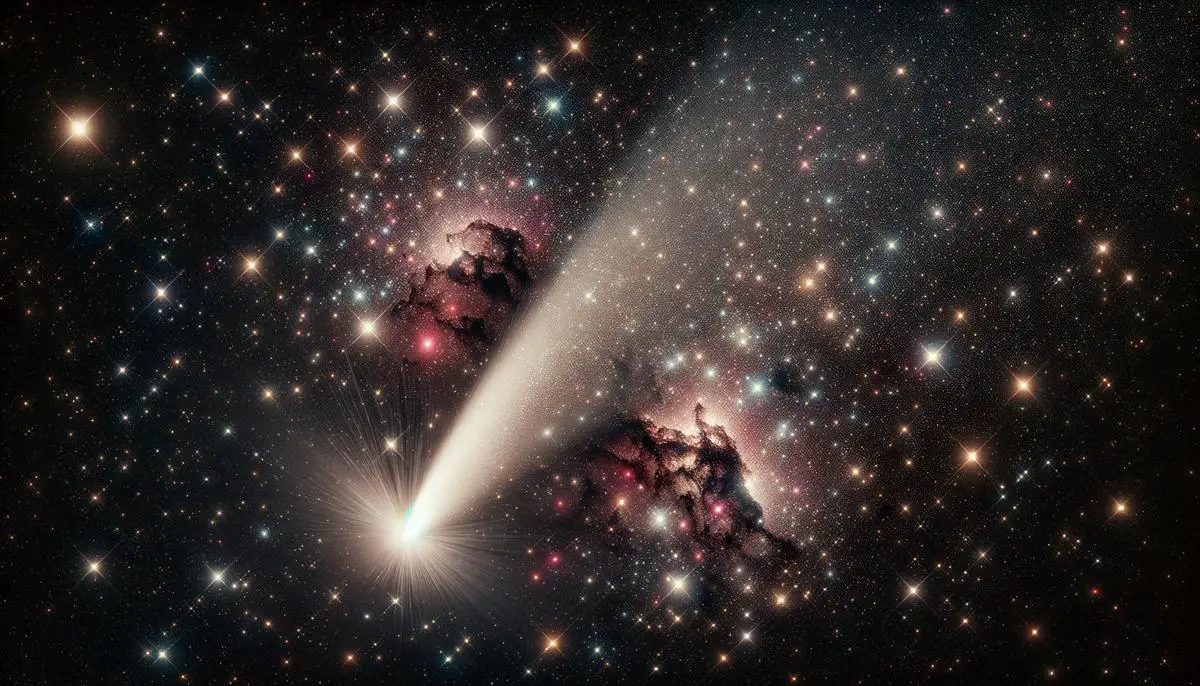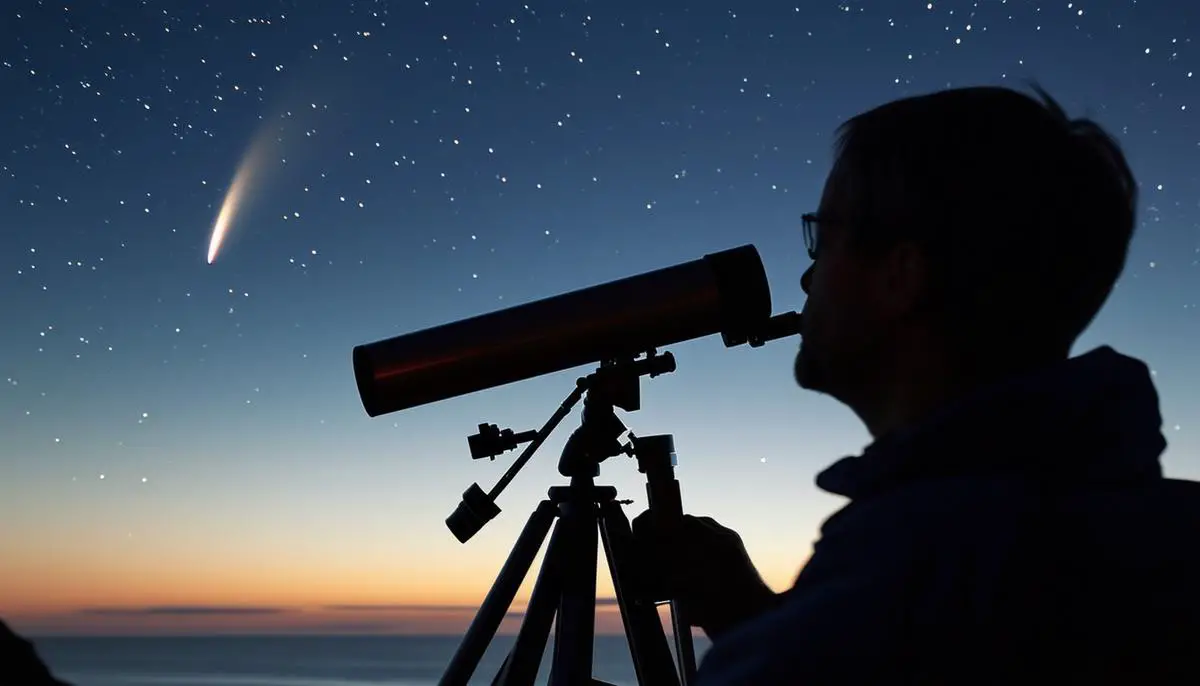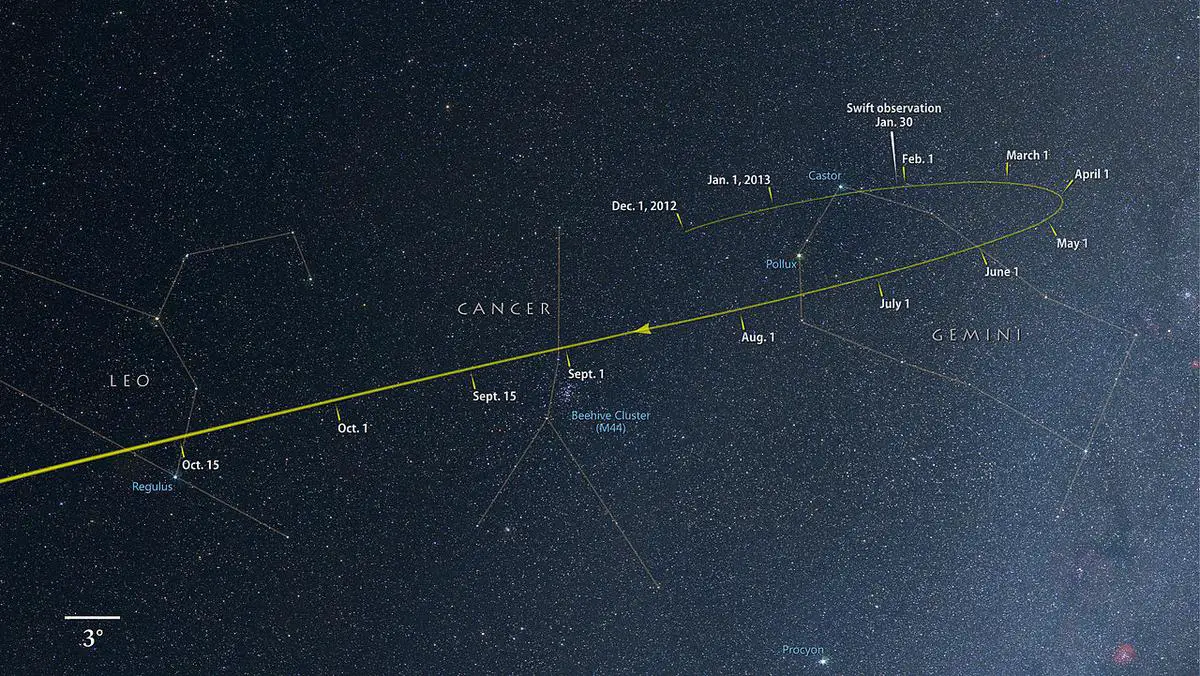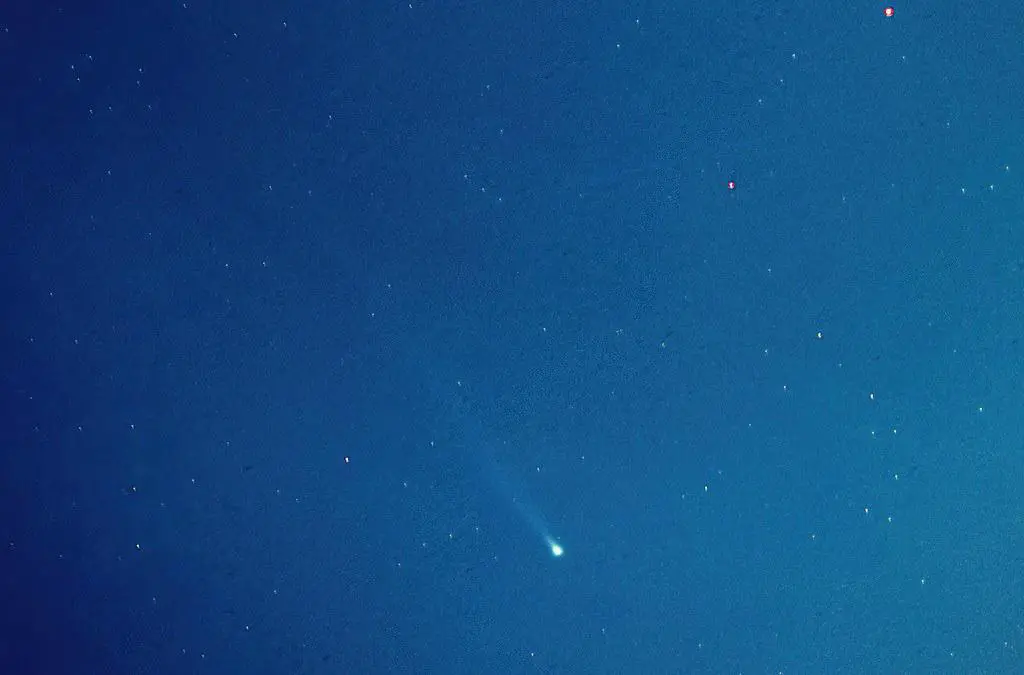Current Visibility and Location
Comet C/2023 A3, also known as Tsuchinshan-ATLAS, is currently traversing the night sky. For observers in the Northern Hemisphere, focus on the western horizon shortly after sunset. The comet is positioned higher than in past weeks, making it easier to observe. On October 15th, look about 13° high; it sits among the stars of Serpens, only a couple of degrees south-west from the globular cluster M5.
In upcoming evenings, the comet will continue rising. By the end of October, it will pass through Ophiuchus, near the star Cebalrai. Watch for a comet possibly dimming by three magnitudes. From London, you might spot it thirty degrees off the horizon. This accessible position is ideal for observation, though binoculars can enhance the experience.
Comet C/2023 A3 shines around magnitude –0.5. Its dust and ion tails extend several degrees across the sky. You'll notice its brightness and tail length shifting slightly due to the comet's trajectory and interaction with sunlight.
For those under southern skies, the views have been equally rewarding. Images taken in Sicily at the beginning of October showed a vibrant tail stretching across the pre-dawn firmament. Comet A3 made its closest approach to Earth on October 12th when it was just over 70 million kilometers away, nestled within the stars of Virgo. The comet has since moved past this constellation and is now climbing higher into less crowded areas of the sky.
Amateur astronomers should watch for potential display highlights, including its tails and dust halo. Whether attempting to capture it with your camera or simply your eyes, the comet offers a unique observational opportunity.

Observing Techniques
To capture the full splendor of Comet C/2023 A3, both binoculars and telescopes are valuable tools. A pair of 7×50 binoculars can readily spot the comet in clear, dark skies, while a telescope with at least a 4-inch aperture will reveal more intricate details, like the structure of its tails and the coma's subtle hues.
The best time to observe the comet is during nautical twilight, approximately an hour after sunset or before sunrise. This timing allows viewers to appreciate the comet without interference from either the Sun's direct glare or excessive light pollution from an advancing night.
Consider moon phases, as they significantly impact visibility. Plan your viewing between October 16-21, as these dates precede the potential interference of the full moon's glare, offering an ideal window where the night sky is darker.
Photography Tips:
- Use a DSLR camera mounted on a tripod
- For wide-angle lenses: 20- to 30-second exposures
- For longer lenses: Slightly shorter exposure times to prevent star trailing
Safety is crucial when observing near the Sun, especially as the comet approaches its path around October 9th. Protect your eyes: never look directly at the Sun through binoculars or a telescope without a solar filter. If attempting daytime photography, block out the Sun successfully, utilizing the shelter of a building or similar structure, ensuring the safety of your sight and equipment.

Comet's Trajectory and Progression
As Comet C/2023 A3 continues its journey, its trajectory is shifting from the morning to the evening sky, offering new observational opportunities. Predictions suggest potential fluctuations in its magnitude over the coming fortnight. As Tsuchinshan-ATLAS moves, the angle of sunlight reflecting off its dust and gas tails could transform, potentially revealing the phenomenon of an anti-tail when Earth crosses through the comet's orbital plane.
October presents an opportunity to capture these anticipated transformations. With each passing night, the comet climbs higher, becoming more visible as it moves away from solar interference. By mid-October, it's anticipated to hover around magnitude 0 to 4, allowing naked-eye visibility even to those outside the realm of seasoned starwatching.
These trajectory shifts offer more accessible viewing opportunities and invite speculations on the comet's future behavior. Amateur astronomers are encouraged to keep their telescopes and binoculars trained on this celestial object, documenting its nuances as it progresses through our skies.

As Comet C/2023 A3 continues its celestial journey, it invites observers to witness the intricate dance of light and shadow across the night sky. This comet serves as a reminder of the wonders that await those who take a moment to look up, offering both seasoned astronomers and casual stargazers an opportunity to connect with the universe's ongoing story.
- Rhemann G, Jäger M, Mölle D. Comet C/2023 A3 (Tsuchinshan-ATLAS) imaged on 3 October from Tivoli Farm, Namibia, southern Africa.
- Tumino G. Comet C/2023 A3 (Tsuchinshan-ATLAS) imaged from Sicily, Italy, on 2 October at 03:57 UT.
- Zhang Q. Orbital plane crossing effects on Comet C/2023 A3 (Tsuchinshan-ATLAS). Lowell Observatory, Arizona.
- Lovejoy T. Photographic observation of Comet C/2023 A3 (Tsuchinshan-ATLAS) from Wellington Point, Queensland, Australia.
- Mattiazzo M. Photographic observation of Comet C/2023 A3 (Tsuchinshan-ATLAS) from Swan Hill, Victoria, Australia.
- Kaufman R. Photographic observation of Comet C/2023 A3 (Tsuchinshan-ATLAS) from Hay, New South Wales, Australia.
- Sekanina Z. Disintegration of Comet C/2023 A3 (Tsuchinshan-ATLAS). July 2023.
![]()
